An interview about the role of the ZEISS Service Department in the process of developing the ZEISS DTI thermal imaging camera and why customer feedback plays an essential role
In the last part of our series of articles on the development of the DTI, we will be taking a look at ZEISS’ in-house service department. So far in this series, we have been able to gain exciting insights into the work of Category Management, System Engineering, and the lab. In the previous article, we looked at the extensive testing our DTI had to go through before it was ready to be launched on the market. From shock resistance to jet water testing to freezing cold, it passed all the tests with flying colors. If something should break, however, our ZEISS Service Department is there to help. We sat down with Christian Cramer (Head of the ZEISS Service Department) and Kim Taferner (Project Manager for sustainable service concepts).
The ZEISS Service Department covers a variety of areas and services. Christian, why don’t you give us a brief overview of the ZEISS Service Department’s work?
Christian: “At ZEISS, our after-sales service team is the direct point of contact for our customers. Our representatives handle just about any request. In general, our department consists of two main areas: our Customer Care Team and our Repair Service.
Our Customer Care Team is available to advise and support our customers in the use of our products or, for example, when it comes to connecting them to our software solutions. We are responsible for responding to all customer inquiries through our various channels. Over time we’ve created an ever-expanding FAQ portal that covers most questions on everything from A for app updates to Z for zoom. But there are also direct personal representatives who know how to provide assistance over the phone.
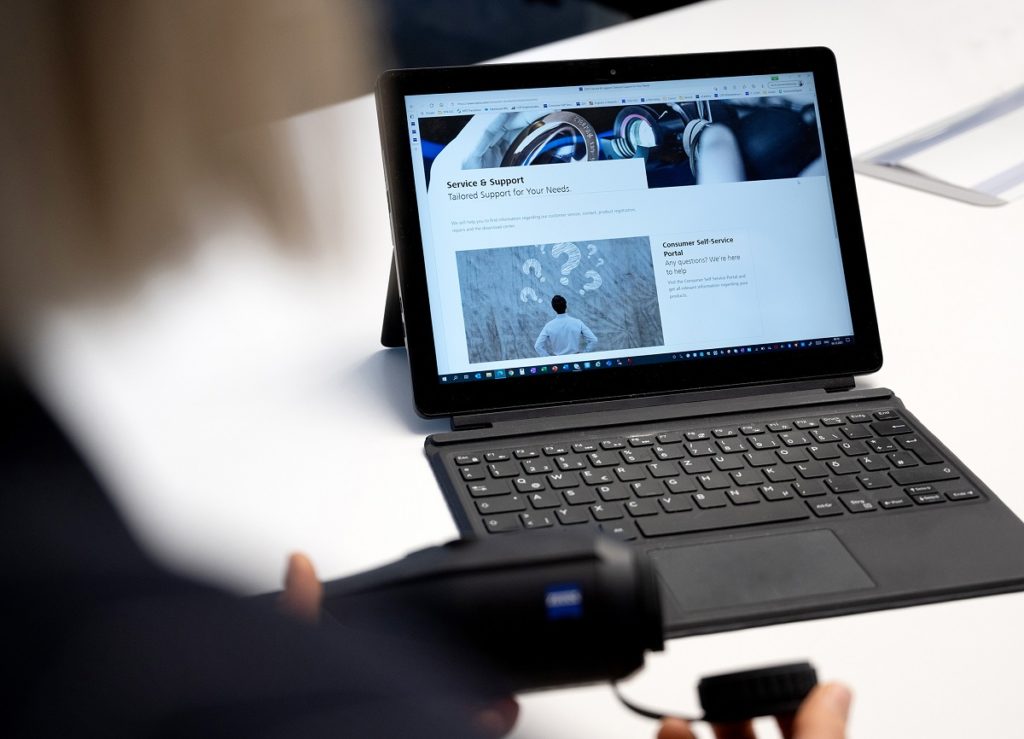
Our Repair Service, on the other hand, handles any product repair requests. We now handle repairs via an almost completely digital repair process. This means that customers initiate their repair via a Formular on our website and we then keep them updated on the progress in real time. Well over 80% of all hunting and nature observation products sent in for service can be repaired directly by our experienced ZEISS technicians in Germany, or more precisely, in Wetzlar.
In all other cases – if the process is going to take longer due to a lack of spare parts or particularly challenging repairs, for example – we will provide the customer with a replacement product so that they don’t have to go without their ZEISS optical device. But if we look at our average waiting time for the ZEISS DTI 3, for example, we fortunately don’t have to resort to this very often. Based on current figures, we can say that, on average, we needed between four and five days to repair a ZEISS DTI. In other words, when taking delivery time into account, customers receive their thermal imaging cameras back after an average of about eight days.”
And what exactly does our Service Department offer for our thermal imaging camera?
Kim: “Thanks to our in-house Customer Care Team in Germany, we can also create a personal point of contact for our customers for the ZEISS DTI 3 family. You have the ability to speak directly with an experienced ZEISS employee who understands your problem. Whether it’s a general inquiry about the product or a repair request, our experts can answer any question. Obviously, however, a single employee can’t be familiar with all the details of every one of our many products. That’s why it’s particularly important that our service employees are well connected with their colleagues in the lab, in development, and in many other departments. This is how we share all our knowledge – and do so in-house, too.
We are also particularly proud of our Repair Service in Germany. When it comes to all new ZEISS products, our goal is to be able to repair them ourselves at every ZEISS service location. This fundamentally avoids long transportation routes. If, in certain exceptional cases, it isn’t possible to repair a product locally, the customer is given a replacement and the irreparable products are then collected at the respective service location. This way, these devices can be sent back to the manufacturing facilities to be repaired – so no product is simply thrown away. In order to increasingly implement this concept, we continue to expand our service locations, thereby extending our service network so that customers from different countries have a local service point at their disposal.”
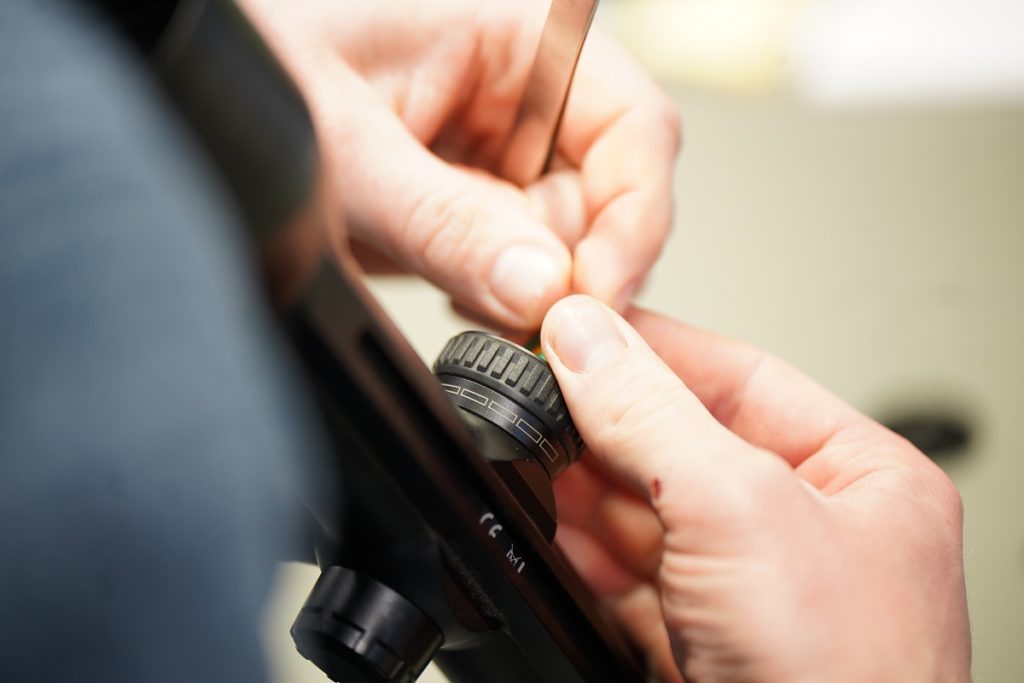
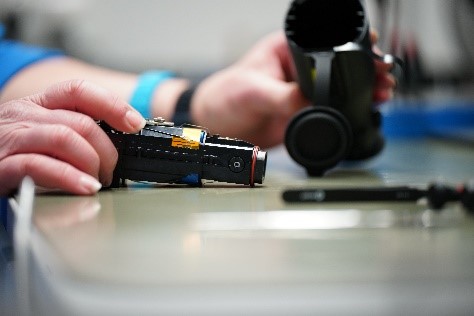
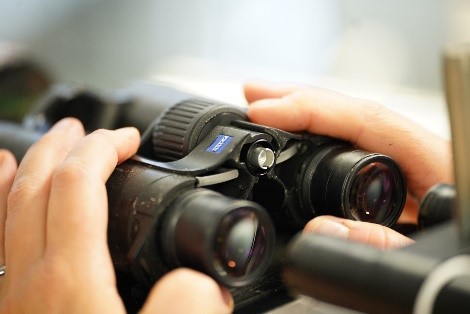
The repair facility in Wetzlar repairs a wide variety of ZEISS products, from the DTI 3 to binoculars and riflescopes.
In previous articles, we discussed the work performed by other departments and heard about their role in the development of the DTI. Where would our Service Department come into play here?
Kim: “Our work doesn’t just start after a product is purchased. Instead, we’re already heavily involved in product development. During this stage, we work together to assess how serviceable a product is. This is a crucial point in the development process – not only for the costumer, but also for us. For example, we make sure that they can install all of the software updates themselves. Or we prefer to screw components together instead of gluing them. This simply makes the products more sustainable, as it is easier to take them apart and put them back together again. For example, in the case of the DTI in particular, we made sure that the front cover could be unscrewed. This means that customers don’t have to send the entire product in for repair if the cover should break during hunting but can replace it themselves. In this context, sustainability is one of our top priorities. Our goal is to develop a high-quality product that, with the right materials, can be repaired rather than having to be completely replaced.”
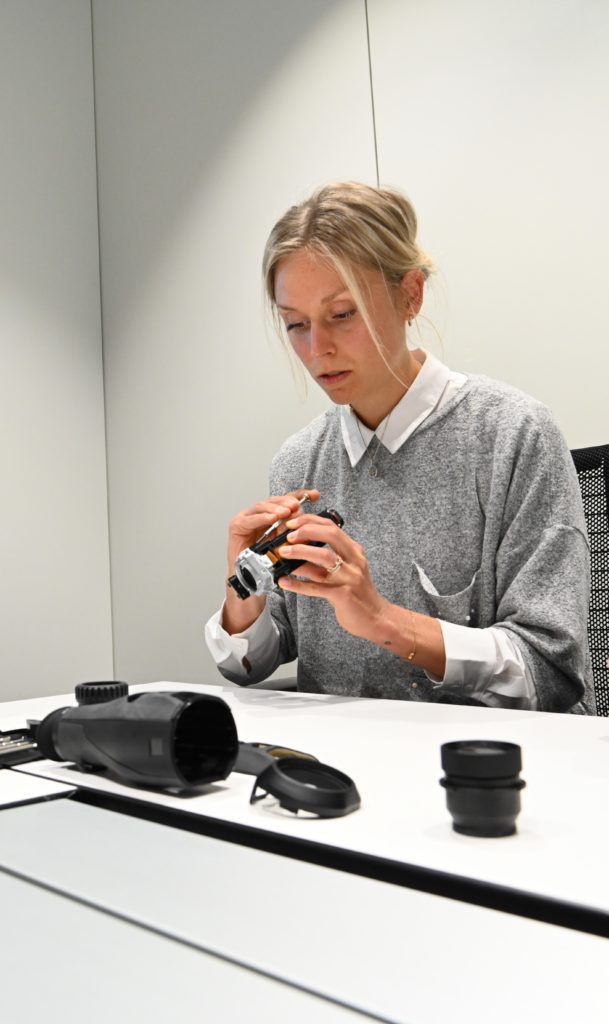
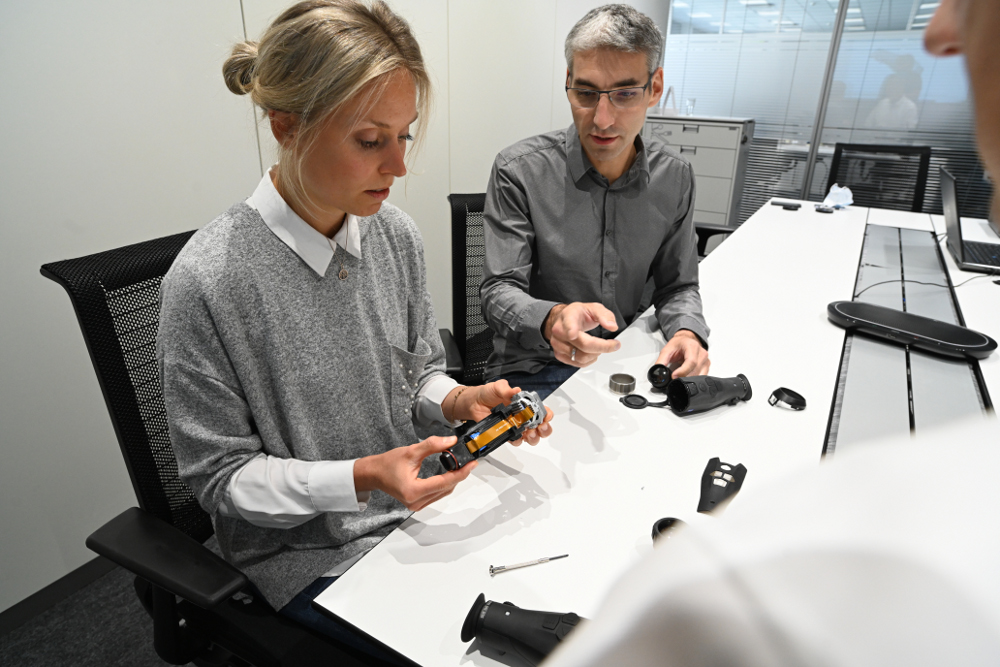
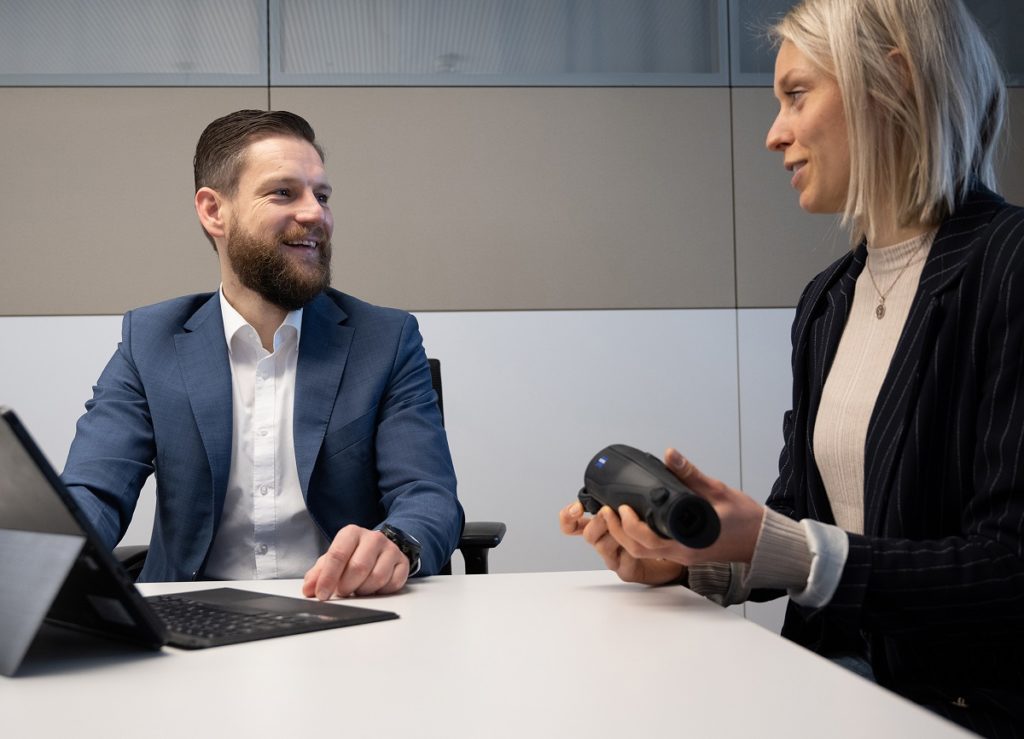
Kim: “In addition to sustainability, however, privacy is also one of our top priorities. And that applies across the board – from app connectivity to the protection of personal data collected during a service case to the way we handle data on sent-in devices. Not only do we ensure that the process is carried out in a responsible manner by complying with all guidelines and requirements, but we also set a high standard for ourselves in terms of our approach to corporate social responsibility.”
What did you pay particular attention to when developing the service concept for the new DTI?
Christian: “Our number one rule in the Service Department is that service concepts are tailored to our products. We faced a special challenge with the DTI, from the electronic components to the software and, above all, connectivity with our ZEISS Hunting app. This is because in addition to hardware repairs, we also offer software support. So we need to offer software support specifically for the DTI.
We also release firmware updates, just like the major app manufacturers do. This allows us, for example, to address multiple customer requests and needs and deliver improvements that all users can enjoy. As such, these updates are usually associated with new features and functions.
Based on extensive customer feedback, in our latest update we made it possible to turn off the LED display light, for example, or added new features such as the Contrast Boost mode. As a customer, you first have to find your way around and familiarize yourself with the new features. Our support team is also available for these kinds of customer inquiries. It’s important to us that new products not only function perfectly when they are released, but that software updates ensure that they can be used in the best possible way over the long term. In this way, we extend the product life cycle and add helpful features. In other words, service at ZEISS goes beyond product maintenance and also includes enhancements and improvements. This shows that the continuous feedback we receive from our customers is having an impact. Following a consultation or repair, we ask all of our customers how satisfied they are. This enables us to solidify existing processes or continuously improve them through their feedback. We monitor these results very closely and make customer satisfaction our top priority.”
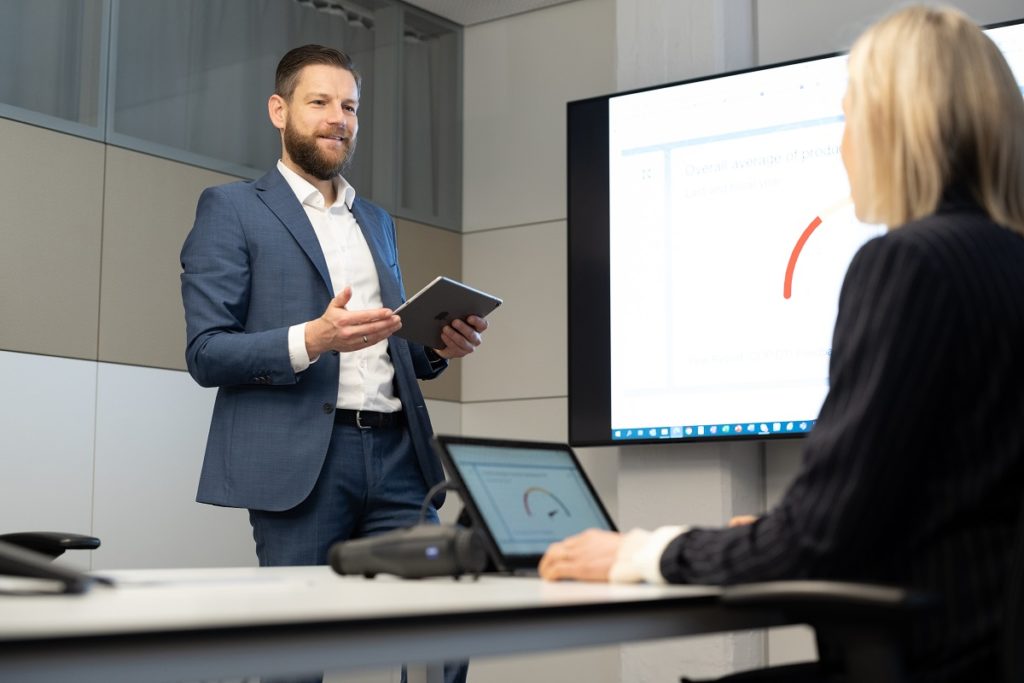
“Continuously monitoring customer satisfaction gives us important feedback and crucial input so that we can keep improving.”
One last question in closing for you, Kim. Is there a particular customer inquiry that remains stuck in your mind?
Kim: “Sure, a horseback rider purchased the new DTI – not to observe animals, however, but instead in order to analyze the pressure points of saddles on the horses’ backs with it. This allowed her to see exactly where the saddle was putting pressure on the horse before saddle sores developed. No one in the Service Department had ever thought to use the DTI this way before, but we’re glad that we were able to help this customer with our product.”